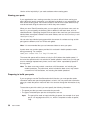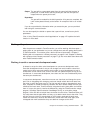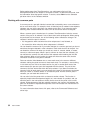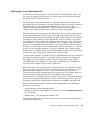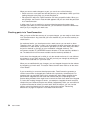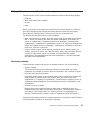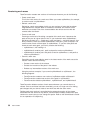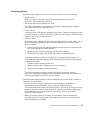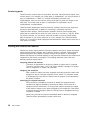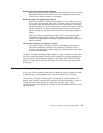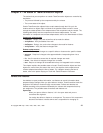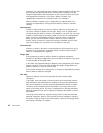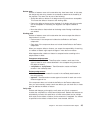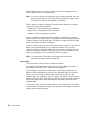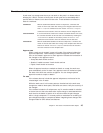
Versioning parts
TeamConnection versions parts in association with other TeamConnection objects, such
as work areas. If, for example, you create part1 in myWorkArea:1, the current version of
part1 is myWorkArea:1. If part1 is in release myRelease:2 and work area
myWorkArea:2, then you can view the version of the part for either the release or the
work area. The version label for part1 in myRelease:2 is myRelease:2 and in
myWorkArea:2 is myWorkArea:2.
TeamConnection deletes part versions whenever it deletes versions of the object that
the part is associated with. In addition to versioning in association with other
TeamConnection objects, TeamConnection maintains versions of build output parts
(parts that are created as the result of a build, such as an .exe file or a .hlp file). When
you create a release, you can set the maximum number of versions of build output
parts to maintain. If you set this maximum to 10, for example, then TeamConnection
saves only 10 versions of build output parts and discards the oldest version each time a
new version is created.
Working with defects and features
Defects are used to report problem information; features are used to record information
about proposed design changes. After a defect or feature is opened, TeamConnection
tracks the progress of the defect or feature through various states. To what degree
defects and features are tracked depends on the processes followed by the release and
component to which they are assigned. The following describes actions that your
defined processes might require:
Analyzing defects and features
The owner is responsible for analyzing a defect or feature after it is opened.
The owner can then return it if it is not valid or feasible, reassign it to another
user or component, or accept it for resolution.
Designing the resolution
After a defect or feature has been accepted, the actual resolution needs to be
designed so that an informed evaluation can be made. This resolution needs
to be designed by users who are familiar with the product or area affected by
the defect or feature.
Identifying the required resources
Sizing records are created by the owner to identify the components and
releases that might be affected by the defect or feature. Each owner of a
component that is referenced in a sizing record needs to evaluate the impact
of the defect or feature on the parts managed by the component. If the defect
or feature requires changes to parts, the sizing record is accepted and sizing
information is added.
When sizing records exist and the associated defect or feature is accepted,
TeamConnection automatically creates a work area.
38 User’s Guide



